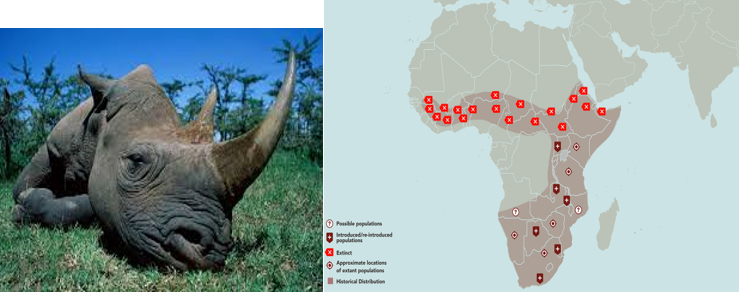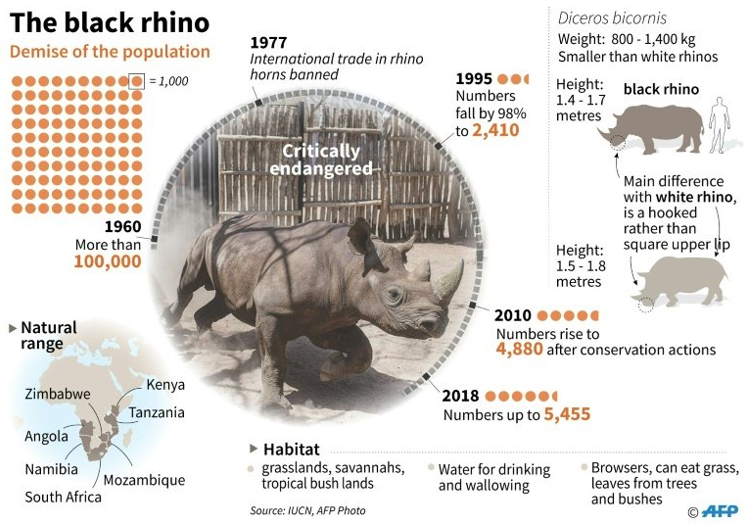Bullet Points:
- Today, black rhinos remain critically endangered because of rising demand for rhino horn, from some Asian consumers, particularly in Vietnam and China, who use them in folk remedies. A recent increase in poaching in South Africa threatens to erase our conservation success, reaching an apex in 2014 when 1,215 rhinos were poached. Poaching numbers are slowly decreasing—594 were poached in 2019—but poaching continues unabated with numbers remaining unsustainably high.
- In Namibia, WWF is leading a consortium of national NGOs to help implement the country’s ambitious law enforcement strategy to combat wildlife trafficking. WWF also supports the Namibian government in its effort to update its plan to grow black rhino populations, in part by moving rhinos from parks with significant populations to others that historically held rhinos but currently do not—a process known as translocation. We’re also taking other security measures to protect both black and white rhinos, such as DNA sampling.
- Of all the threats facing black rhinos, poaching is the deadliest. Black rhinos have two horns which make them lucrative targets for the illegal trade in rhino horn A wave of poaching for rhino horn rippled through Kenya and Tanzania, continued south through Zambia's Luangwa Valley as far as the Zambezi River, and spread into Zimbabwe. Political instability and wars have greatly hampered rhino conservation work in Africa, notably in Angola, Rwanda, Somalia, and Sudan. This situation has exacerbated threats such as trade in rhino horn and increased poaching due to poverty.
Social Behaviour and Territory
- Sociability: black rhinos can be either solitary and territorial, or semi-social and less aggressively-territorial, depending on the habitat. Incredible footage from the recent BBC Africa series recorded a group of black rhinos congregating socially at a waterhole, thus disproving myths that black rhinos are strictly solitary.
- Male territory: a typical bulls’ territorial range is generally around 3.9-4.7 km. Adult male black rhinos tend to live on their own, except when courting females. Among males, there are dominant and subordinate animals. Subordinate rhino within these ranges are often young adults, who must be submissive to the dominant bull. Young bulls and old males who cannot defend themselves as strongly are often killed or injured in aggressive territorial interactions or become confined to a small area until they die.
- Sounds: sniffing and snorting are the most common noises made by rhinos, especially when disturbed. Some grunting between social groups has also been observed as a form of communication.
- Daily activity: black rhinos can be active both day and night, but are least active during the hottest parts of the day (around 10am-3pm), where they seek shade under large rocks, trees or mud wallows.

